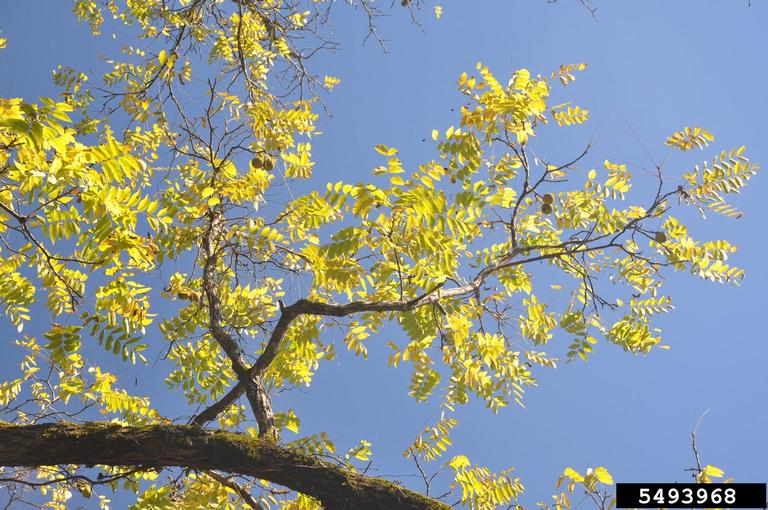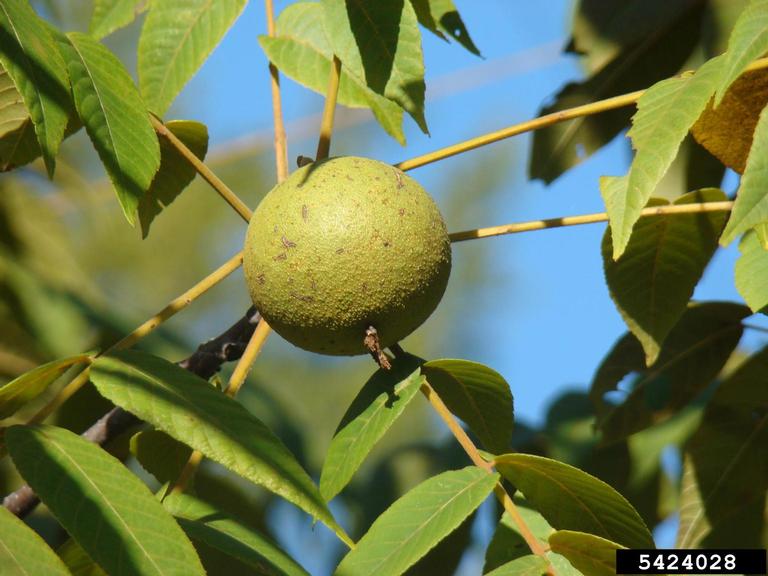
When you look into your garden or backyard, be careful not to ignore your black walnut (Juglans nigra) tree. Lurking inside its leaves, fruits and roots is a pesticide made to control competition.
Black walnuts are valuable as shade and timber trees. They produce delectable nuts, too. But if your black walnut overhangs your garden, your tree may be out to get you.
Toxic ooze
The fruit, leaves and roots of black walnut trees contain a chemical, juglone, that can have a devastating impact on the roots of other plants. In humans, ingesting even a small amount of pure juglone can cause a serious poisoning effect.
Inside the tree, juglone is a clear liquid — called prejuglone — that's nontoxic. If the tree cells which contain this prejuglone are damaged, cut or injured, it is immediately oxidized into its toxic form of juglone.
You can observe this by cutting into the husk of a small walnut. The cut area quickly changes from green to dark brown as it is exposed to the air, and the clear prejuglone is rapidly oxidized to dark, reddish-brown juglone.
Insects, diseases and mechanical injury can cause prejuglone to be oxidized into its toxic form. Over time, juglone naturally leaks out of walnut roots, leaves and buds into the soil, acting as as a protective chemical and herbicide for the walnut tree.
While the highest concentrations of juglone, by far, are found in black walnut parts, many other members of the walnut family contain it too — English walnut, butternut, pecan and the rest of the hickories all have small amounts.
The fruit husks contain the highest concentrations in any species. One of juglone's many purposes is to prevent pests from attacking new seeds and the embryos they carry, and walnut fruit carry their own pesticide with them.
The effects of juglone

Some people and animals are susceptible to juglone damage. Consuming too many leaves or using walnut sawdust for bedding can cause a number of problems with animals. Some people are especially sensitive to juglone, and even sawdust from cutting walnut lumber can coat skin and produce a red welt where it lands. Juglone is a strong respiratory toxin and small amounts will damage other living creatures.
In the soil, juglone will damage many living things, including plant roots. Once it's released into the soil, small amounts can damage and kill the roots of neighboring plants. Beneath the tree, this walnut chemical severely damages annual plants, garden vegetables, fruit trees and some broadleaf perennials. Most grasses seem immune. If it leaks back onto a walnut root, however, it is quickly made nontoxic again and stored. Wherever walnut roots travel, they change the soil they move through by adding juglone.
Protecting your landscape
For very susceptible plants, like tomatoes, potatoes and peppers, even walnut mulch can be damaging. Be sure to age or compost leaves, twigs, fruit husks and wood chips from walnut trees before adding them to a garden or landscape.
An oxidation and aging process converts all the prejuglone into toxic juglone. Further aging and oxidation, under moist conditions, will break juglone apart into nontoxic components. Grind down black walnut stumps or remove them. Take away any chips or sawdust for composting.
Some trees, such as red maple, willow and apple, won't perform well on sites recently occupied by black walnut roots. Many plants won't grow well around living black walnuts or where trees have recently lived. Other plants can not survive under the walnut canopy of leaves. One full growing season, though, is usually enough to eliminate most of the juglone from healthy soil.
So, if you think your walnuts are out to get you — they can be if you're not careful.






